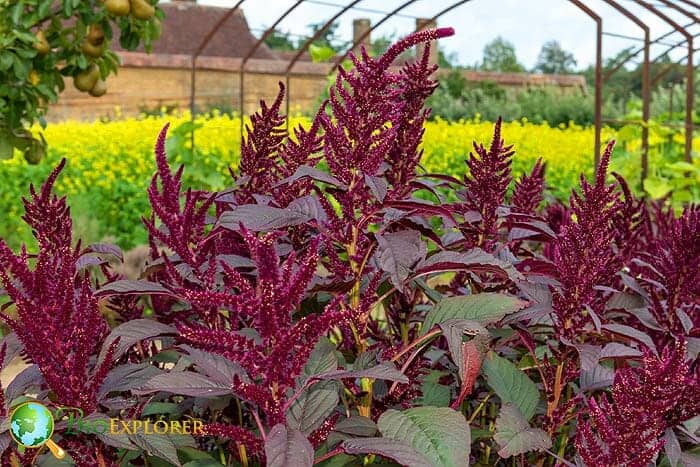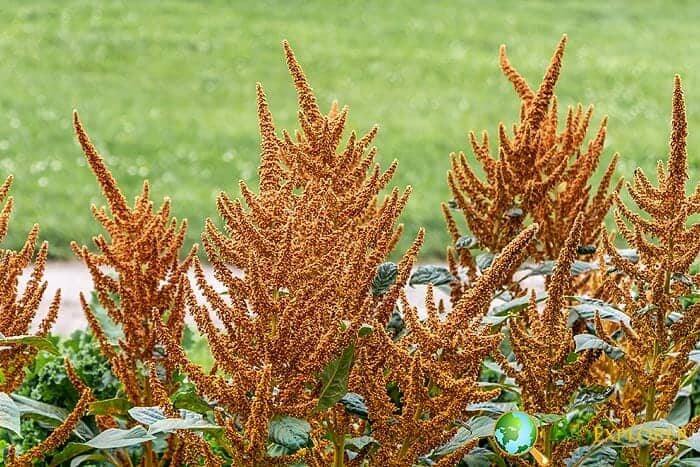
Amaranthus hypochondriacus is a plant that is known to make a striking statement in borders or beds. It grows up to 6 feet tall and carries slightly fuzzy purple-red flower spirals in Summer, followed by seed heads that can be yellow, purple, or red.

Known commonly as Prince’s Feather or simply Amaranth, Amaranthus hypochondriacus is a striking ornamental and edible plant native to Mexico. It features bold, upright spikes filled with tiny magenta to red flowers and large, broad green leaves.
Amaranth holds deep cultural significance in Mexico — it was a staple grain for the Aztecs and remains important in traditional foods like “alegría” (a sweet made with popped amaranth and honey). It’s drought-tolerant and thrives in poor soils, reflecting its ancient resilience in Mexico’s varied landscapes. Today, amaranth is prized for its nutritional value, boasting high protein and lysine content. Explore the top desert flowers here!
It originates from the tropics of South and North America. It is one of 3 Amaranthus species[1] that are grown for their grain. Also, it is found in tropical Africa, but its true distribution is unknown due to confusion with related flower species.

Usually, the plant is green, yet a purple variation was once cultivated for Inca rituals.

Amaranthus hypochondriacus is also known as Mexican grain Amaranth, foxtail Amaranth, Red Amaranth, Purple Amaranth, Sudan-spinach, Indian-spinach, African spinach, Red Shank, Panicled Amaranth, Caterpillar Amaranth, Bush Greens, and Blood Amaranth.












